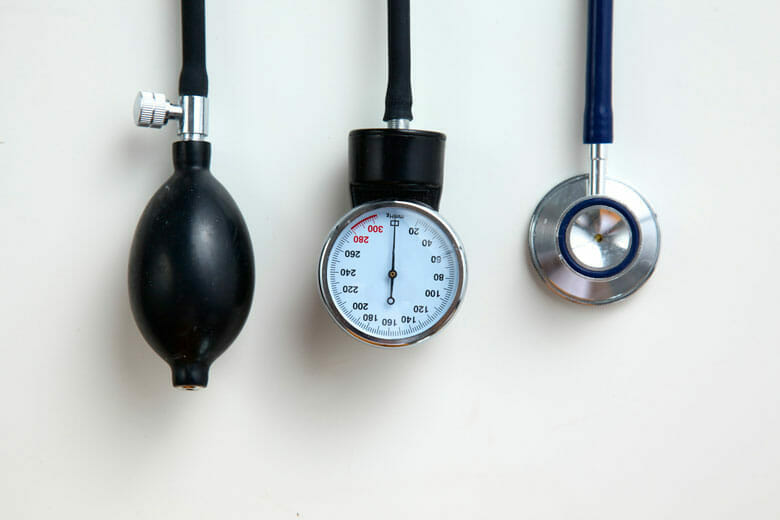As of Monday, November 13th, the American Heart Association and the American College of Cardiology updated guidelines for high blood pressure for high-risk individuals. Prior to this update, high blood pressure was defined as 140 for systolic blood pressure and 90 for diastolic blood pressure. Now, the high blood pressure targets have moved down to 130/ 80 mm Hg. This is the first update to US guidelines on blood pressure detection and treatment since 2003.
Blood pressure looks at how much pressure your blood is exerting on artery walls. The upper number is your systolic blood pressure reading, which indicates the amount of pressure being exerted on artery walls when your heart beats. Diastolic blood pressure, labeled by the lower number, indicates how much pressure your blood is exerting against artery walls while the heart is resting between beats.
In people 50 and older, systolic blood pressure receives more attention as an independent risk predictor for coronary events, stroke, heart failure, and end-stage renal disease. This number often increases steadily with age due to long-term build-up of plaque, increasing stiffness of large arteries, and the increased occurrence of cardiac and vascular disease.
The updated guidelines will result in more people being diagnosed with hypertension. Experts predict that about 46 percent of the US population will be labeled as having high blood pressure, as opposed to the previous 32 percent. People in their 40s will be most affected by this update.
The update stems from twenty-one experts from the American Heart Association and the American College of Cardiology. The group reviewed blood pressure studies, including an important study by the National Institutes of Health that supported lowering the guidelines.
The decision to lower targets for high-risk individuals was unanimous. High-risk individuals are defined as people who have heart disease, chronic kidney disease, or diabetes, or as people with a 10-year risk of having a heart attack or stroke that is greater than 10 percent. The standard for low-risk individuals has not changed.
High blood pressure is the second leading cause of preventable heart disease and stroke; the first is smoking cigarettes. Ultimately, the experts believe the new guidelines will reduce risk of life-threatening heart attacks and strokes.
Although there are many blood pressure medications, there are non-pharmacological approaches to reduce and control your blood pressure. These include:
- Weight loss
- Exercise
- Healthy diet
- Reduced intake of alcohol and salt
- No smoking
- Reduced stress
Knowing and understanding your blood pressure is key to controlling it. If you have high blood pressure, have a conversation with your primary care doctor about your blood pressure and best course of treatment for you.
Disclaimer: The information provided in this article is not intended to diagnose health problems or take the place of professional medical advice or care you receive from a health care provider. A high or low blood pressure diagnosis must be confirmed with a licensed medical professional. Always consult your health care provider about symptoms, health problems, medications, and treatments.
Sources
Krumholz, Harlan. “With Stricter Guidelines, Do You Have High Blood Pressure Now?” NPR, NPR, 14 Nov. 2017, https://www.npr.org/sections/health-shots/2017/11/14/564038552/with-stricter-guidelines-do-you-have-high-blood-pressure-now.
A Randomized Trial of Intensive versus Standard Blood-Pressure Control — NEJM. The New England Journal of Medicine, 26 Nov. 2015, http://www.nejm.org/doi/full/10.1056/NEJMoa1511939 – t=articleTop.
Goff, David C., et al. “2013 ACC/AHA Guideline on the Assessment of Cardiovascular Risk.”Circulation, American Heart Association, Inc., 1 Jan. 2013, circ.ahajournals.org/content/early/2013/11/11/01.cir.0000437741.48606.98.
“Understanding Blood Pressure Readings.” American Heart Association, 13 Nov. 2017, http://www.heart.org/HEARTORG/Conditions/HighBloodPressure/KnowYourNumbers/Understanding-Blood-Pressure-Readings_UCM_301764_Article.jsp – .Wgyw37D83OR.
Science X. High Blood Pressure Is Redefined as 130, Not 140: US Guidelines (Update). Medical Xpress, 14 Nov. 2017, medicalxpress.com/news/2017-11-adults-high-blood-pressure-guidelines.html.





